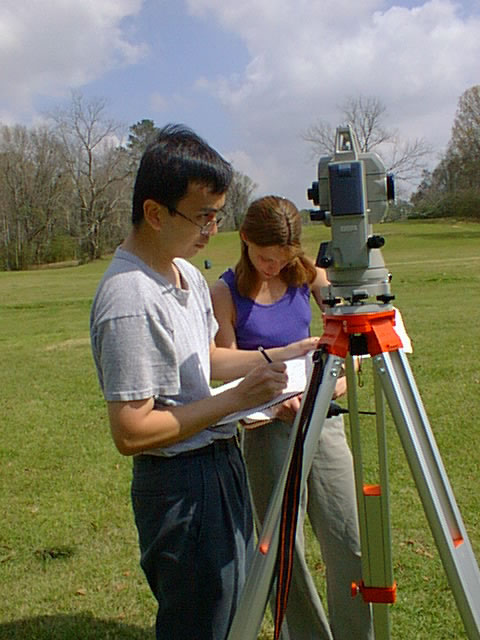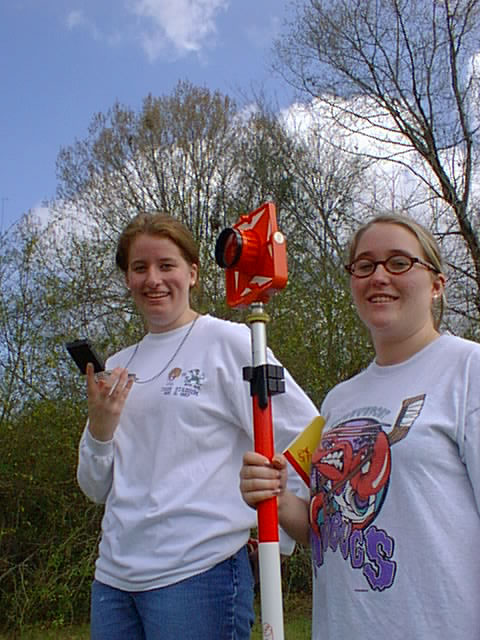by Juan Chow, Maureen Kennedy, Rebecca Tedford and Carrie Walker.
| The
SOKKIA Set 6F theodolite projects a laser beam to a prism target and returns
a 3-D coordinate set in the form of N, E, and Z.
Juan and Rebecca |
The
theodolite requires a coordinate set as its starting position.
We choose due north as our Yo coordinate, due east as our Xo coordinate, and Zo to be the vertical direction; Xo, Yo, and Zo are all zeros at the theodolite measuring station. a
Fig. 1. a = Azimuth angle. Angle on the horizontal plane that diverges from Xo (in our case, North). from the vertical above the theodolite to the line that defines the slope distance S. |
| Ih is the height
of the theodolite. Th is the height of the prism target; because these
two heights are not equal and are not on the surface of the land, they
must be taken into account when calculating Z.
b Fig. 2. b = Zenith angle. Angle measured from above the theodolite down to the line that defines the slope distance S. (See Fig. 3.) |
Fig. 3. S = Slope distance. The direct distance from the theodolite to the prism target. Z = Height difference between Zo and the height of the land at the prism target. S = N / cosa sinb = E / sina
sinb
|
|
asadsda 
Fig. 4. Plan view of the relationship
among N, E, and a (azimuth angle).
E = Distance from the theodolite
to a point along the Xo axis that is perpendicular to the target
|
Go to:
Maureen and Carrie |
.




